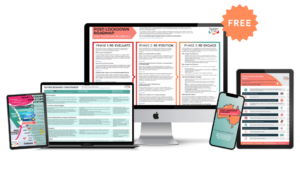As part of their stealthy push into the travel industry, Google has recently launched Google Trips. It’s an App that enables you to organise your trips and travel itineraries. Its not an entirely new concept; Apps like TripIt have been around for a while, but Google’s search dominance, deep pockets, other compatible apps, products and tools and gargantuan inventory of business listings (viz Google My Business) gives them a pretty solid competitive advantage on which to make it an everyday tool for trip planning and destination guides.
Tourism Organisations and other destination marketing organisations (DMOs) are typically seen as the incumbent players in providing objective information on destinations. However a recent study by Expedia Media Solutions on the British Traveller Path to Purchase revealed that just 3% of respondents ranked destination sites owned by DMOs and tourism boards as the most influential online resource in booking destination decisions. Not surprisingly, online travel agencies (OTAs) and search engines were the most influential online resources.
So now that Google has an App that can draw on all of the information they gather about users and businesses through their own products and platforms like Search, Maps, Google Plus, Google My Business, Gmail, and YouTube into a personalised travel guide and itinerary manager on your mobile, are destination marketing organisations doomed?
It certainly makes their job harder, given the amount of data and content Google has at its disposal. The App functions through the creation of trips, organises your flight, travel and hotel reservations, offers editorial guides to more than 200 cities, and makes personalised recommendations based on your Google history. And it works offline so you can use it if you don’t have Wifi access (provided you have downloaded your trip data before you leave). But is Google Trips any good?
We put it to the test for an upcoming business trip to Sydney.
Firstly, you need to have a Gmail account. That’s easy enough to do if you don’t have one, so no big hassle.
Creating a trip is easy. Just type the city name, and add the dates. Sydney is easy to find, as is London, Deloraine, Gympie, or Ho Chi Minh City. I could not find some cities and towns that I thought would be quite obvious based on Google Maps, but they do say ‘more than 200 cities’, implying some limitations at the moment.
I could find Bondi Beach, but not Balmain or Newtown or Chatswood. So you can build an itinerary for cities and some towns, but not at the more granular suburban level.
From there, you can search for things to do, food and drink, save places, how to get around and use maps to create day plans. Obvious attractions and places like Sydney Harbour Bridge, Sydney Opera House and Taronga Zoo are there as well as places of interest like ocean baths, museums, galleries and gardens. However, searching for things of personal interest (e.g surfing or music shops) proved fruitless (despite verifying businesses I searched for in these categories have claimed their business listing on Google). There were a few random ‘recommendations’ like the Museum of Human Disease (a special interest if every there was one!)
Managing reservations is somewhat more perplexing. According to Google Trips, ‘trip reservations are automatically gathered from Gmail and organized into individual trips. If you have reservations-related emails in a different account, forward them to your Gmail account to automatically create a new trip. Make sure to refresh the app after forwarding the emails.’
This is geared toward getting more users for Gmail, which, while a little irritating, is a small price to pay if the App can trawl the emails and automatically gather and organise them into individual trips as it promises. Its possible to set up auto-forwarders from most proprietary email client software.
I did all of the above, including forwarding an accommodation reservation with a very obvious “Your Reservation” caption in the subject field and reference to dates and Sydney in the body copy, but the App didn’t perform as promised. None of the emails i forwarded found their way into reservations as is claimed, even after allowing a few hours for downloading and/or syncing.
Currently, you can’t manually add reservations, because they are ‘automatically added from Gmail’ including from emails forwarded to a Gmail account. Well, not in my experience so far.
Google Trips is new, and is probably going to be improved, but for now, there are too many friction points for it be be useful for a typical business trip or short break. DMOs and tourism boards can breathe easy, for now.
About the author

Russell Mills from Surfer Rosa Communications specialises in marketing and training services for tourism, events, hospitality and creative industries.




